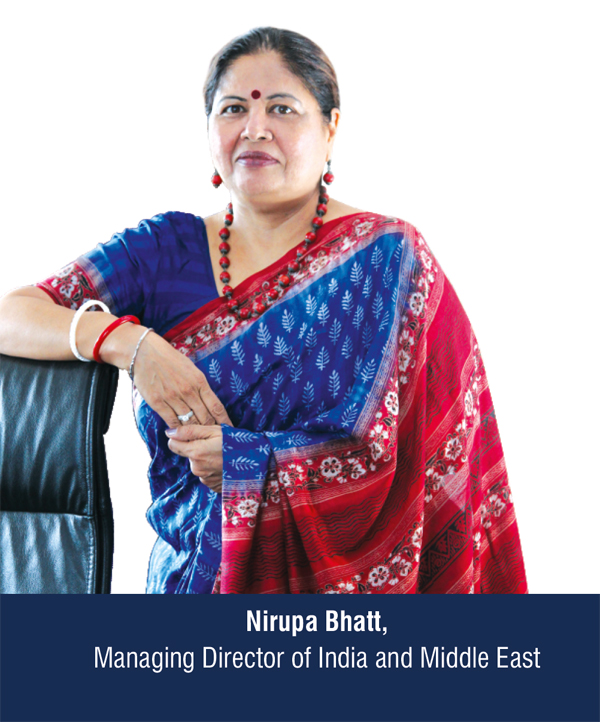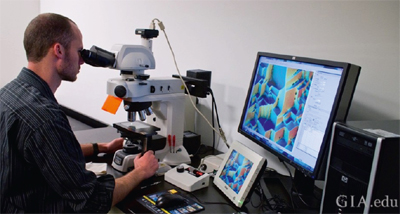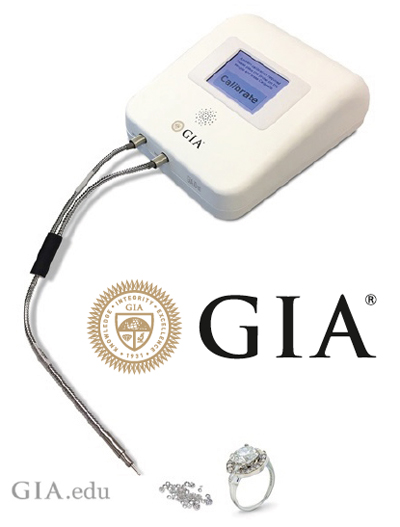 In an exclusive interview with the New Jeweller – JTM team, Ms Nirupa Bhatt, Managing Director of India and Middle East opines on the importance of Diamond identification technology in an era where Natural and Synthetic Diamonds co exist, and opines on the success of Melee Analysis Service launched by GIA. Excerpts:
In an exclusive interview with the New Jeweller – JTM team, Ms Nirupa Bhatt, Managing Director of India and Middle East opines on the importance of Diamond identification technology in an era where Natural and Synthetic Diamonds co exist, and opines on the success of Melee Analysis Service launched by GIA. Excerpts:
Diamond detection is now an important task to sustain and build the natural diamond business. Your opinion on the importance of screening devices and will it realistically help in evolving the industry into becoming a 100% transparent sector?
A wide range of gem material – both natural and synthetic – can be found in the marketplace. The processes to produce synthetic diamonds and other gemstones have become increasingly sophisticated, and the industry needs appropriate identification devices to distinguish natural diamonds from synthetic and treated diamonds and simulants. The gem and jewellery industry survives on trust and it is the responsibility of all the participants in the industry to use scientific instruments that can distinguish these gem materials and that the results are fully disclosed to clients.
To that end, GIA (Gemological Institute of America, Inc.) is working diligently to build global consumer confidence and ensure the public trust in gems and jewellery. An important part of that effort is the instrumentation that GIA has developed to differentiate natural diamonds from synthetic diamonds and diamond simulants. In 2014, GIA introduced the DiamondCheck™, which examines colorless stones in the D-to-N range and identifies untreated natural diamonds and refers others for further analysis. GIA made the DiamondCheck available at no-cost to diamond bourses around the world. In 2016, GIA introduced the Melee Analysis Service, an automated system that separates natural, untreated melee size diamonds from simulants, synthetic and HPHT treated natural diamonds. The recently introduced GIA iD100™ gem testing device is an easy-to-operate, sophisticated desktop instrument to reliably differentiate mounted and loose natural diamonds from synthetic (HPHT and CVD) diamonds and diamond simulants.

It is sometime now that the Melee Analysis Service has been introduced in the diamond industry by GIA. What has been your experience in terms of feedback received from the trade regarding the service and what is your future plan to upkeep and upgrade the service?
GIA India organises panel discussions on the challenges and opportunities presented by synthetic diamonds and the feedback is encouraging. Manufacturers and retailers have expressed interest in services such as the Melee Analysis Service to ensure the nature of the diamonds in their pipeline. And with our decision to open a new grading laboratory in Surat later this year and the availability of the Melee Analysis Service there, GIA India will bring this service closer to where the majority of melee is cut and polished.
What is your opinion on the price points regarding the Diamond detection devices currently available in the market? Is there a large gap when it comes to pricing within competitor products?
There are various devices available in the market. One needs to check for the reliability of such devices before using. It's not only about the price, but also whether the device is meeting the objective of accurately distinguishing between natural diamond, synthetic diamond and simulant material. All of these instruments require regular maintenance and calibration. That's where the service provided by a reputable laboratory such as GIA India with trained and experienced gemmologists and sophisticated analytical instrumentation and analytical expertise for determination is extremely crucial.
Diamond detection is one part of the Diamond business while the other part is education. Do you see enough effort made in terms of educating the trade or the consumer when it comes to identification of natural from synthetics? If yes, how? If No, what measure should be taken for educating the trade and the consumer?
Creating awareness about the possibility of undisclosed synthetic and treated diamonds and simulants in the supply chain is an important step in ensuring public trust is maintained. GIA has examined millions of natural diamonds and has completed over sixty years of research into the development of synthetic diamonds. GIA India works to share this knowledge on the latest in synthetic diamonds through trade education seminars. In 2017 alone, we conducted over 140 such complimentary seminars in 100+ locations – Metros and Tier-II towns – across India and the Middle East.
Tell us something about the iD100? How is it performing in the India and the Middle Eastern Markets? What are your future plans and challenges faced to promote the said product in the specific regions?
The GIA iD100™ gem testing device combines advanced spectroscopic technology with GIA's decades of diamond and gemstone identification research to distinguish natural diamonds from synthetic (HPHT and CVD) diamonds and diamond simulants. It is a continuation of GIA's effort to bring practical gem identification solutions to the industry.There has been a good response so far with jewellers being able to demonstrate immediate confidence in the identity of their diamonds.
